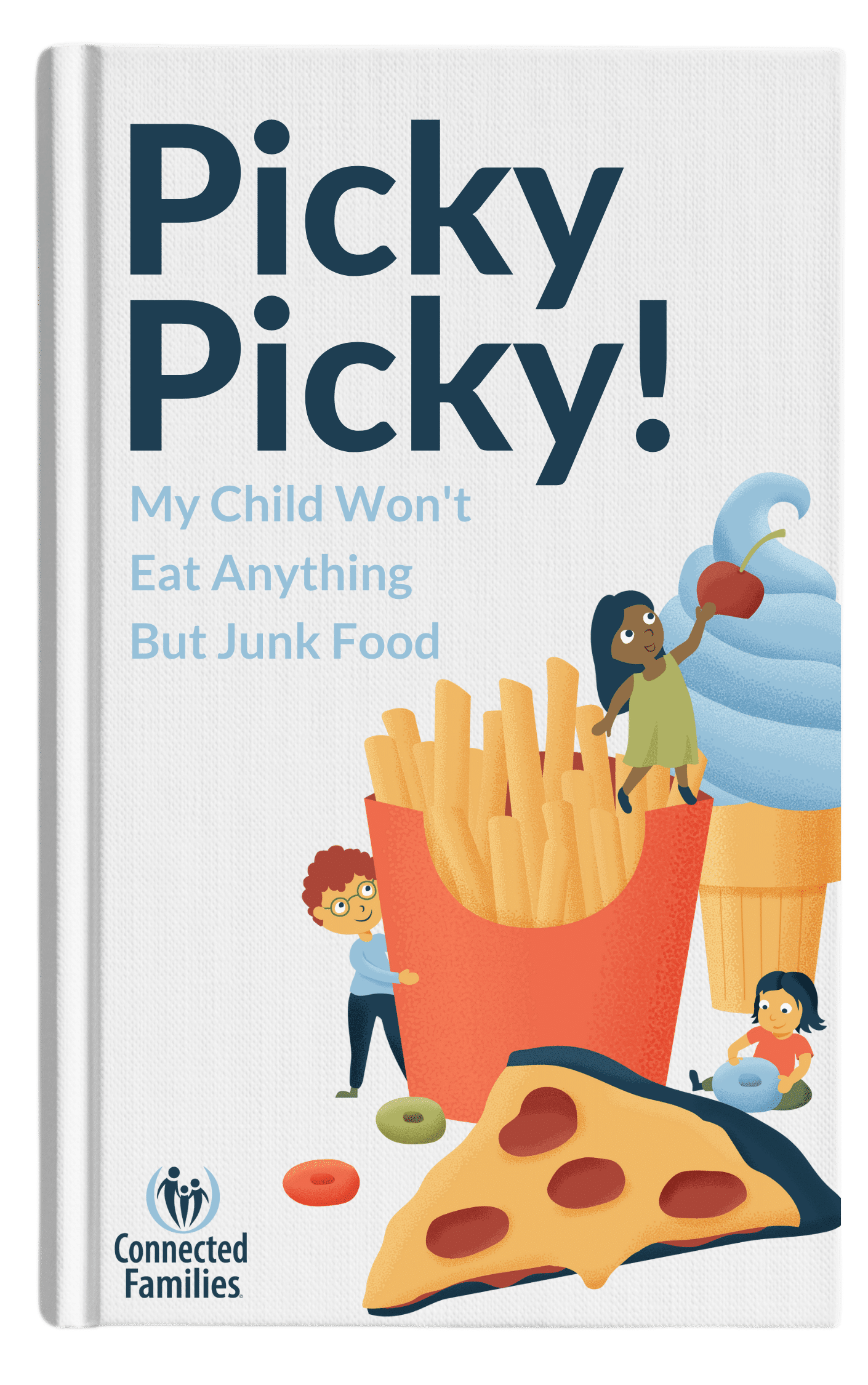
7 Practical Tips for Picky Eaters

It is truly a God-given desire to feed your child healthy food. Unfortunately, this good desire can easily go awry when your child turns up his nose at what you consider to be essential nutrition. A picky eater’s rejection of certain foods is often rooted in sensitivity to smell, taste, or texture, but whatever the cause, it often ramps up to an intense conflict if you get determined that “My kid WILL eat her Brussel sprouts.”
When this happens, your child may believe, “If I eat that yucky green stuff, Mom won, and I lost.” At that point, it’s no longer about sprouts — it’s about winning and losing. Plus, all the intense, furrowed-brow attention you gave your child in the conflict just “fertilized” their avoidance of that food.
Research consistently shows that attempts to make children eat certain foods are more harmful than helpful! One study even revealed that children who were rewarded for eating a new food were less likely to eat it the next time it was served than were children who were simply presented the food!
Parents tend to view picky eating as defiance or manipulation, and so they tend to respond with increased attempts to gain control. But this just aggravates the situation at the moment, and fuels further difficulty in the future. Turning the tide on this dynamic requires that parents create an emotionally safe and fun environment in which kids can learn about and explore their food options—without pressure to eat!
Here are some practical tips to make this easier for all of you at dinner:
1) Keep it light.
Whether you’re telling knock-knock jokes or watching how entertaining peas are when they roll around on your plate, fun at the table reduces the anxiety that drives most food avoidance.
2) Help children explore and learn about a variety of food with no expectation to eat it.
Knowledge decreases anxiety. Let kids explore and even play with their food. Especially for younger children, it is developmentally essential to explore and have fun with their food in order to learn about it. Ask questions that help kids talk about the food’s shape, color, smell, texture, taste, and how it compares to foods they enjoy – e.g., “The peas are green, just like little grapes! Does it have a big or little smell? Is it salty or sweet? Slippery, soft, or crunchy?”
3) Use positive language.
Avoid saying “Stop,” “Don’t,” or “No” at meals. It is helpful to state rules regarding appropriate behavior in positive terms: “The food stays on the table.” “Chairs are for sitting, not standing.” “We use our inside voices at the table.”
Replace demands (“Eat your carrots!”) or questions (“Can you eat your chicken now?”) with “You can” statements that help a child feel empowered. For example, “You can try that new food.” If your child says “NO!” simply smile and reply, “You can when you’re ready.”
4) Serve “safe food” at every meal.
Serving one thing that your child finds acceptable can greatly reduce power struggles. Avoid special-order cooking or “kid food” and “adult food” delineations. Everybody gets a little of everything on their plate. Nobody has to eat anything! Help kids serve themselves.
5) Teach kids to have an “exit strategy.”
Many children refuse to try new food because they are afraid they’ll be stuck with something disgusting in their mouth (swallowing it would be too awful!). Help children learn to discreetly tuck unwanted food into their napkin. “If you try it and decide you don’t want it in your mouth, you can quietly put it into your napkin. Watch while I show you.”
6) Remember the “10 Times Rule.”
Research shows that it takes about 10 times of trying a food to know if you like it. Don’t try to persuade them they really did like the broccoli. Let them have their opinion, smile, and say, “We’ll try it again sometime. It takes lots of tries to decide.”
7) Gently affirm sampling of new foods.
Do not pressure, manipulate, reward, or excessively praise children for eating. These tactics imply children wouldn’t naturally want to eat the food, i.e., there’s something wrong with it. Observations like, “I see you tried something new,” or “We’re both eating our peas” are helpful. Your child should realize he is eating something of his own choice, not to please you.
The most important thing is to continue to offer a good variety of healthy food in a safe, fun environment without taking over your child’s responsibility of choosing what and how much to eat! If you can help them learn to choose wisely for themselves, they will keep growing those skills on their own for a lifetime of healthy eating.

Got a very selective eater in the home? Maybe they only eat the color white, or just can’t sit at the table long enough to eat anything. Whatever the challenge, we want to help you.
Read our FREE ebook, Picky Picky! My Child Won’t Eat Anything But Junk Food.




